Chemical reactions involve the rearrangement of atoms from "summary" of Atoms Under the Floorboards by Chris Woodford
When chemicals react, they don't disappear or magically transform into something entirely new. Instead, they undergo a kind of cosmic shuffling act, with atoms constantly swapping places in a never-ending game of musical chairs. You can think of it as a molecular tango where partners are constantly changing, but the dance floor remains the same. In other words, chemical reactions involve a rearrangement of the atoms, not a creation or destruction of matter. Picture a group of friends at a party, mingling and chatting as they move around the room. Suddenly, one person decides to switch partners, prompting a chain reaction as others follow suit. Eventually, everyone ends up in a different spot, but the total number of people remains the same. This is similar to what happens during a chemical reaction - atoms swap places and form new molecules, but the total number of atoms before and after the reaction remains constant. To understand this concept better, let's take a closer look at a simple chemical reaction involving hydrogen and oxygen. When hydrogen and oxygen molecules come together, they undergo a rearrangement where two hydrogen atoms combine with one oxygen atom to form a water molecule. In this process, the atoms are not created or destroyed; they simply reorganize themselves to create a new substance. This rearrangement of atoms is the essence of all chemical reactions, whether it's the rusting of iron, the burning of a candle, or the baking of a cake. In each case, different atoms come together, break apart, and reassemble in new combinations, resulting in the formation of new substances. It's like a cosmic jigsaw puzzle where atoms are the pieces, constantly moving and fitting together in different ways to create the world around us. So, the next time you witness a chemical reaction, remember that what you're seeing is not the birth or death of atoms, but a beautiful dance of rearrangement where old partners part ways and new bonds are formed. It's a fundamental principle of chemistry that governs the world at the atomic level, shaping everything from the air we breathe to the food we eat.Similar Posts

Embracing imperfections fosters growth
Embracing imperfections is a powerful act, one that can open the door to growth and self-discovery. In a world that often value...
Chemical reactivity predictions
Chemical reactivity predictions involve using theoretical models and computational methods to anticipate how molecules will rea...
Chemical reactions involve the breaking and forming of chemical bonds
Chemical reactions are processes in which substances are transformed into new substances through the breaking and forming of ch...
The concept of moles allows us to measure atoms in larger quantities
The concept of moles is a fundamental part of chemistry that allows us to work with atoms on a practical scale. Atoms are extre...
Marie Curie made groundbreaking discoveries about elements
Marie Curie was a scientific pioneer who made significant discoveries about elements that revolutionized the field of chemistry...
